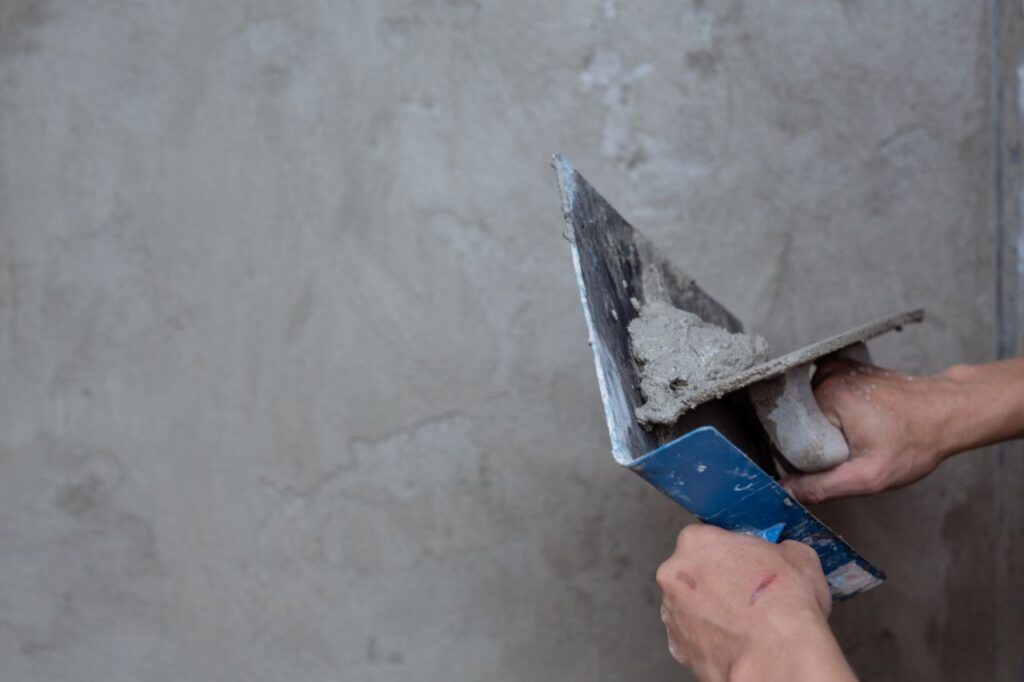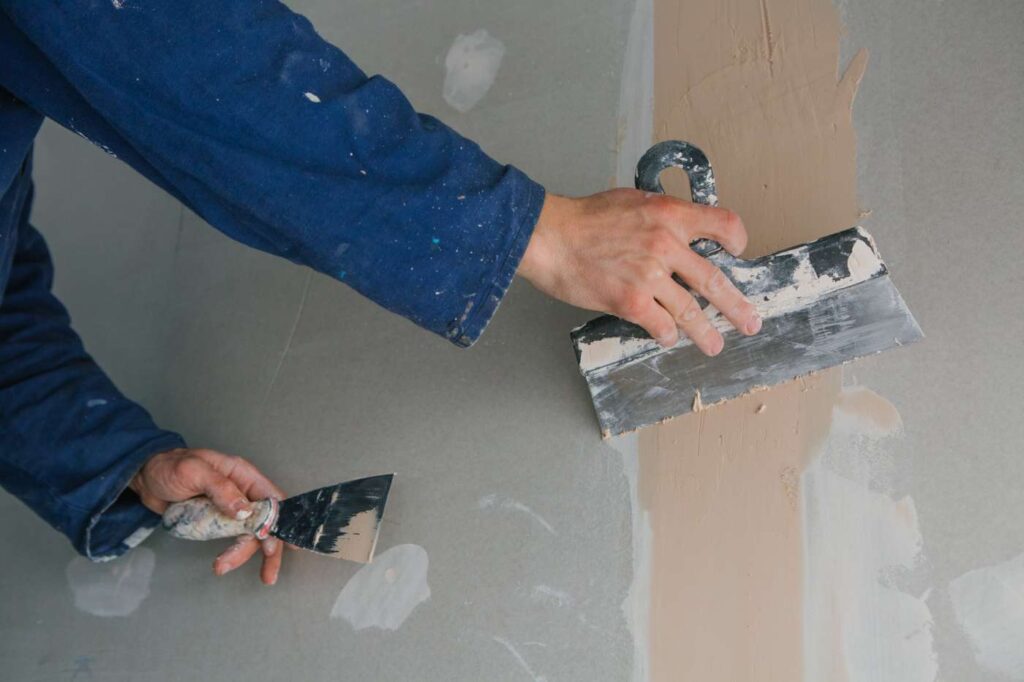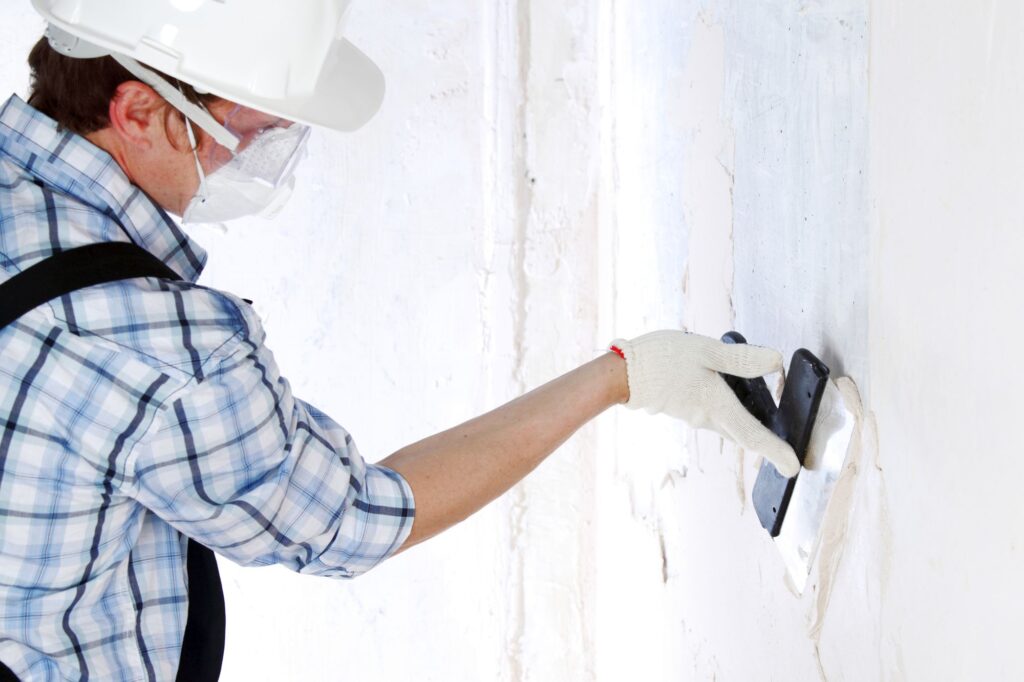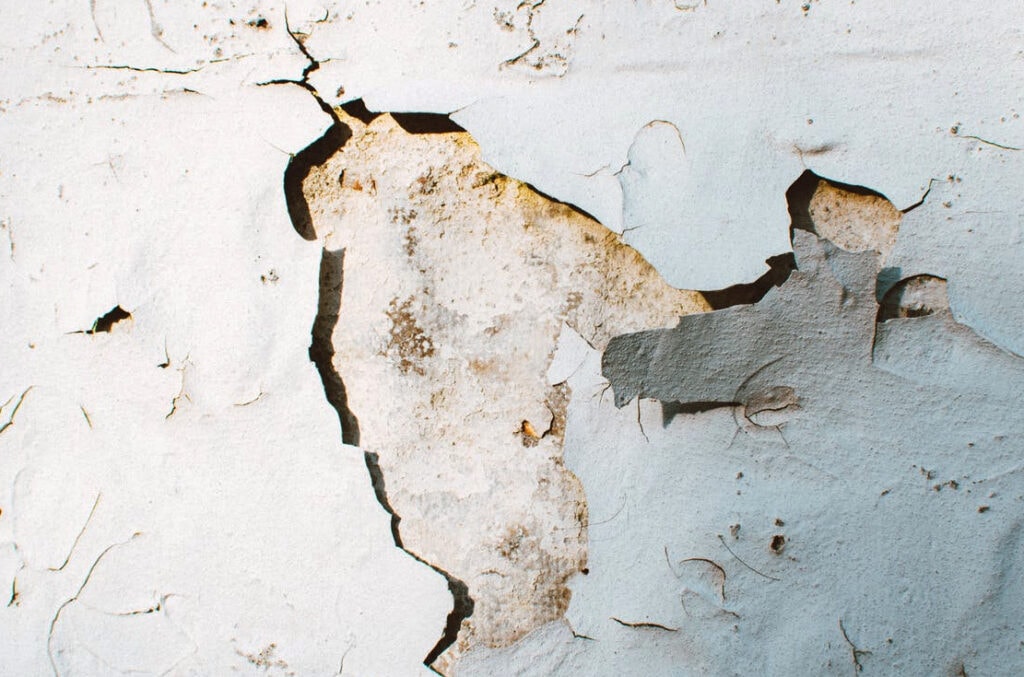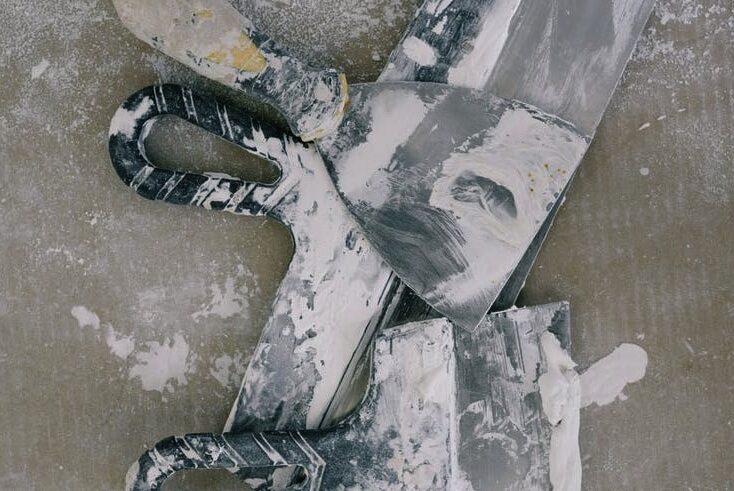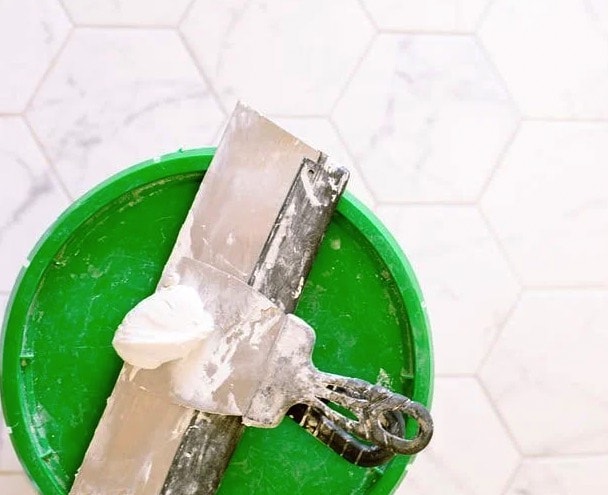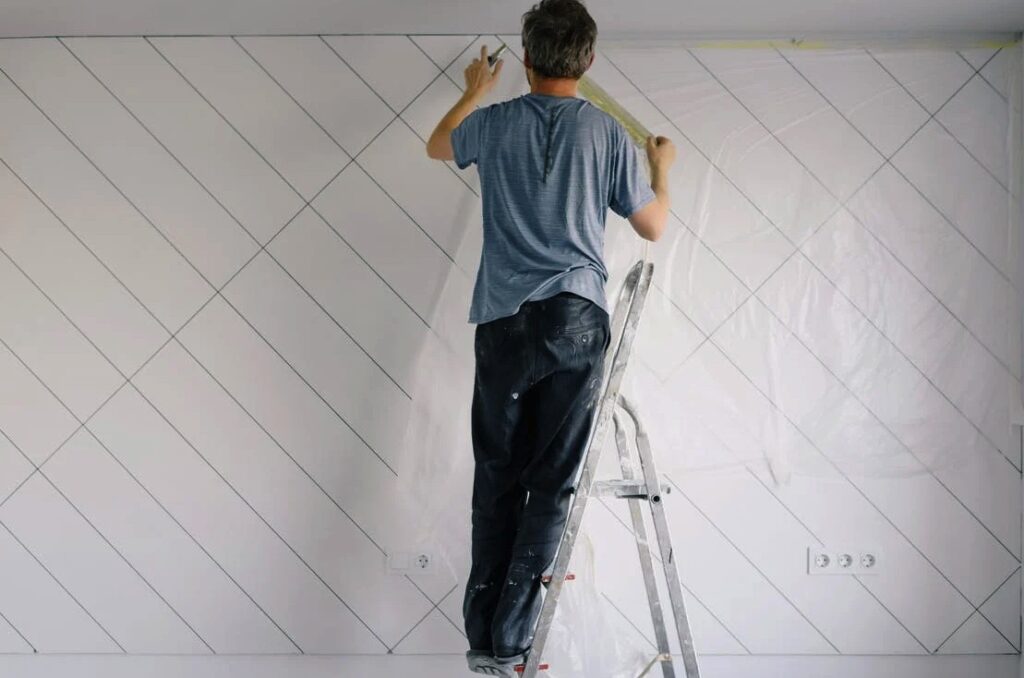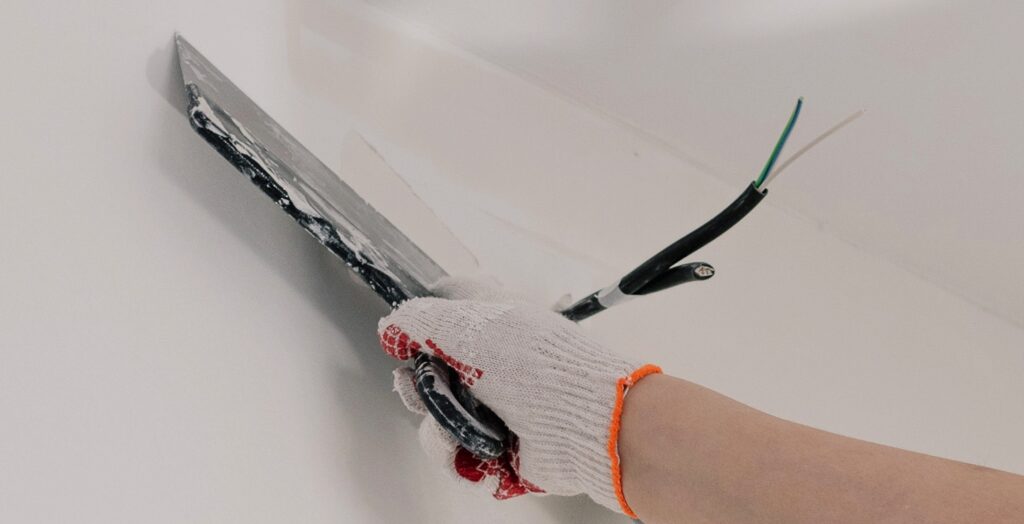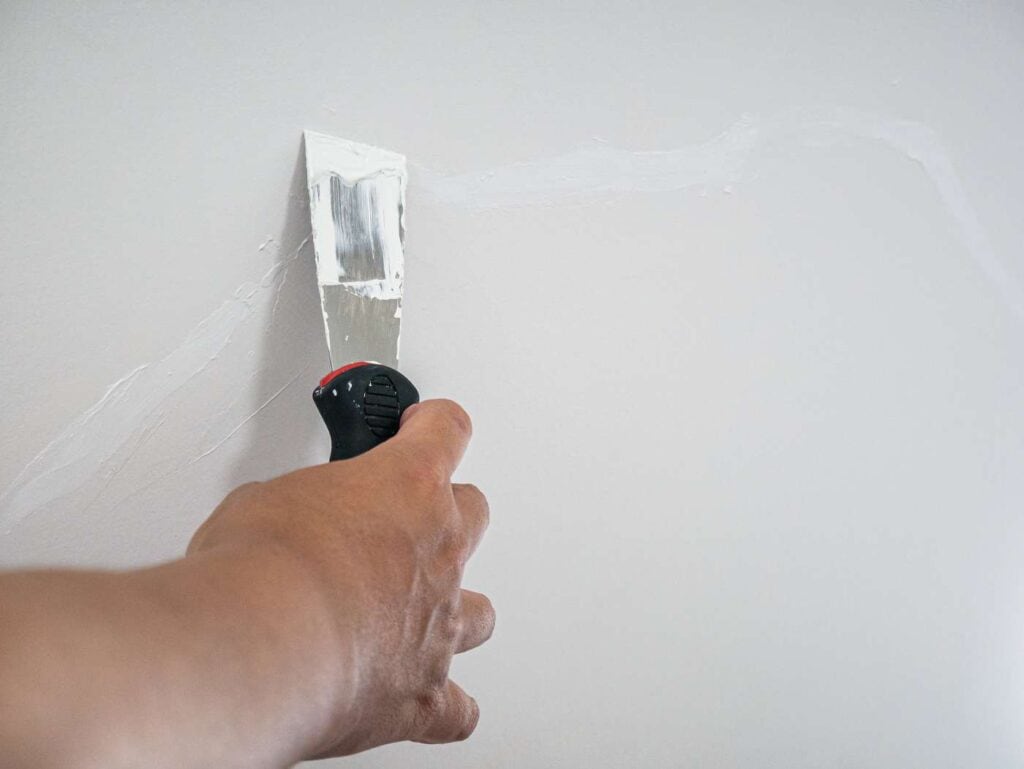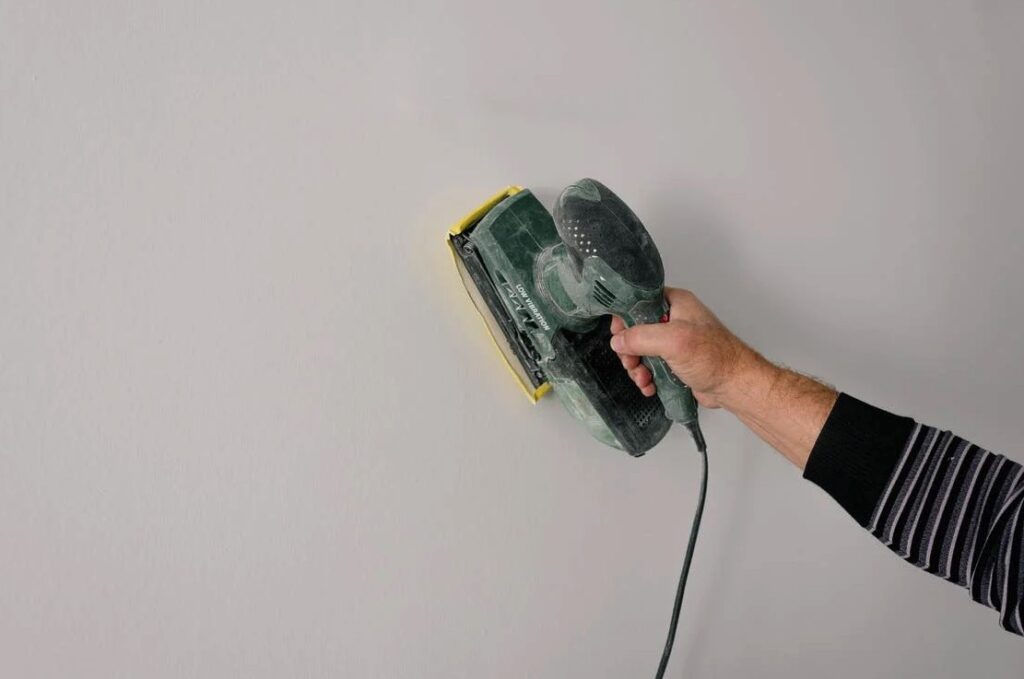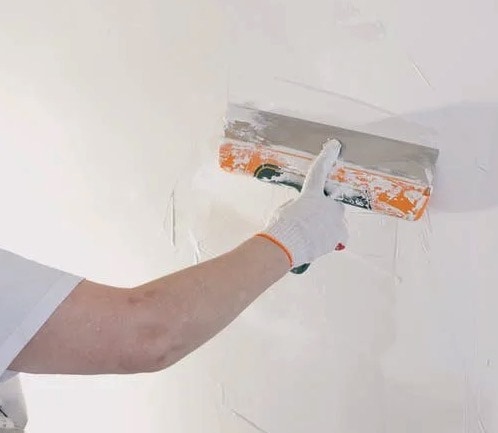The plastering sector is vital to the building and design industries, as it is responsible for creating smooth and aesthetically pleasing finishes for walls and ceilings. Although it has been used for millennia, plastering has become an integral part of contemporary building methods.
The relevance of the plastering sector is undeniable, but one may wonder, "What is the industry's fundamental purpose?" This critical enquiry gets at the heart of why plastering exists.
For both practical and aesthetic reasons, the plastering industry exists to coat the inside and outside of buildings. Plaster is a multipurpose material that may protect ceilings and walls from the elements and improve the building's aesthetics.
Plastering serves several purposes, but competent workers can add aesthetic value by creating elaborate designs and textures. Plastering is a wonderful vocation that combines practicality and artistry, and it is still widely used in creating buildings, both old and new.
Historical Evidence
Plastering as a construction method dates back to prehistoric human societies. Plastering is an ancient craft with a long and varied history that has been attested to at archaeological sites across the globe.
Origins Of Time
Plastering was first used circa 7500 BCE in the region that is now Jordan. Plastered walls, made from clay and used for protection and insulation, have been found in ancient homes by archaeologists.
Plaster was widely employed in ancient Egyptian architecture. Using gypsum and lime, the Egyptians perfected plastering techniques to add decorative touches to their buildings and temples. Their skill in plastering is evident in the Great Giza Pyramids.
Contributions Of The Greeks And Romans
Plastering was perfected by the Greeks and Romans, who used it extensively in their buildings. They developed innovative methods for making plaster surfaces look smooth and polished, raising the quality of their constructions' visual appeal.
Marble dust was commonly employed by the Greeks as a component of plaster formulations, giving their buildings a sophisticated and expensive look. The Romans, on the other hand, made their plasters out of a mixture of brick lime and sand, but rather volcanic ash called pozzolana, which was both long-lasting and impervious to water.
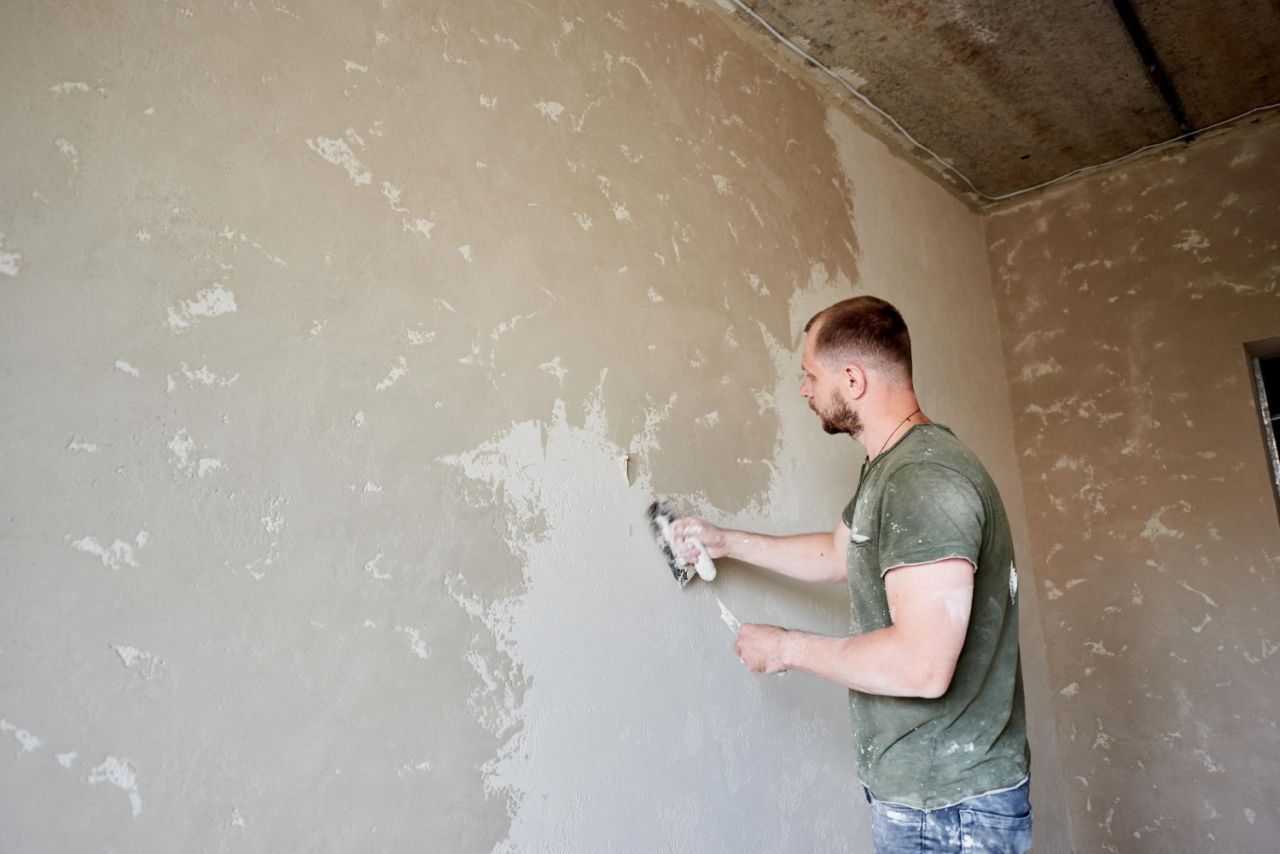
Periods Of Medieval And Renaissance
Plastering methods advanced throughout Europe in the Middle Ages. Artisans used lime-based plaster to decorate the walls and add intricate decorations. Gothic cathedral vaults and castles were adorned with plastered ceilings and elaborate plaster mouldings.
The architectural styles of ancient Greece and Rome saw a renaissance during the Renaissance. Elegant palaces and stately mansions saw an increase in the use of ornate stucco work as plasterwork techniques improved.
In The New World, Plastering
Plastering methods were brought to both South and North America during European discovery and colonialism. Missions and early communities in the Americas relied heavily on lime plaster, brought to the continent by Spanish colonists.
Advancements In The 19th And 20th Centuries
The plastering business saw major transformations in the nineteenth and twentieth centuries due to the industrial revolution. Plasters made with cement saw a rise in popularity due to their convenience. Gypsum plasterboard's introduction streamlined and reduced the price of building internal walls.
Modern Plastering Methods
New techniques and materials have contributed to the ever-changing plastering market of today. Plasters made with cement continue to be widely used because of their adaptability and longevity. The water resistance and visual attractiveness of acrylic & polymer-based plasters have also contributed to their popularity.
Plastering materials and methods that reduce their environmental impact are gaining popularity as people rediscover the importance of sustainability. The building industry is constantly looking for new ways to lessen its negative effects on the environment while keeping up with the needs of the 21st century.
The evolution of plastering reflects the inventiveness and innovation of various cultures throughout history. Plastering, which has been used since ancient times and now makes use of cutting-edge technologies and supplies, is essential to the construction process and contributes to the practical and aesthetic worth of buildings and structures all over the world.
The Plastering Techniques
Plastering is an art form that requires precision and practice to achieve a flawless finish on walls and ceilings. Getting a perfect result calls for skill, focus, and the necessary equipment. Here we shall examine the fundamental procedures and tools used in the plastering trade.
Surface Cleaning
Plastering should only be attempted when the surface has been properly prepared. There shouldn't be any crumbs or dirt lying around. Damaged or peeling paint, wallpaper, or plaster must be removed. In addition, any damage should be rectified and mended before the new plaster is applied.
Plastering The Surface
Making the plaster mixture is the next stage. The plaster used to be created by combining ingredients like lime, sand, or water, but nowadays, most plasters are sold in pre-mixed bags. Traditional plastering, on the other hand, requires precise measurements of lime, sand, & water to reach the right consistency.
Plaster Application
The method used to apply plaster varies according to the object being plastered and the desired finish.
Trowel Application:
- Using a trowel is a standard technique for applying plaster. Plaster is applied by troweling it onto the surface in even, thin layers.
- A level and homogeneous surface is achieved through a mixture of sweeping & smoothing actions used by the plasterer.
Spray Application:
- Larger projects, especially those for which a textured finish was prefered, can benefit from a spray machine. Plaster is sprayed once blended to the proper consistency for application with a spray gun.
- Coverage can be completed more quickly, which is especially helpful for larger areas, but an even coat demands practised handiness.
Float Application:
- The final coat is often applied using the float method. Plaster is spread and levelled using a float to provide a uniform, high-gloss finish.
- This method is frequently used to attain a finishing touch or to correct minor flaws.
Drying And Curing
Plaster, once applied, must be given enough time to dry and harden. Plaster can harden and fully solidify during the curing process. It is crucial to shield the plaster against excessive moisture and sunshine at this time.
Lasting Details
Some finishing touches may be needed once the plaster has cured to obtain the desired effect. This includes eliminating unevenness, fixing minute flaws, and achieving a consistent feel throughout.
Decorating And Painting
Plaster can be painted or given other ornamental treatments once it has dried and hardened. Plaster walls can look better by applying paint, wallpaper, or other decorative touches.
Helpful Advice for a Plastering Project
- Plaster should be mixed and applied according to the manufacturer's directions.
- Keep your plastering layers uniform in thickness for the best results.
- Clean the area so dust and other particles don't get into the plaster.
- Take your time and work steadily for the best results.
- Hiring an experienced plasterer is a good idea for larger projects.
Plastering is an art form that can only be mastered with time and experience. Whether doing a tiny patch job or a major renovation, using the right plastering techniques is essential for a beautiful, long-lasting result that won't compromise the structure.
Plastering's Function In Building
Plastering is an important part of the construction industry because it enhances the structural and aesthetic qualities of buildings and other structures. Plastering is essential in construction since it protects the underlying surfaces and improves the building's aesthetics. Here we'll look at the many ways in which plastering contributes to the building process as a whole.
- Provides a Protective Layer: Plastering is often done to provide a barrier between the underlying structure and the elements. Plaster prevents moisture, rain, & wind from penetrating a structure. It keeps water from getting behind your walls or under your ceiling, where it could cause mould and rot. Plastering helps a building live longer and requires fewer repairs because it seals the surfaces.
- Improves Aesthetics and Appearance: Plastering not only serves to protect surfaces but also greatly improves the visual appeal of both indoor and outdoor areas. Plaster's uniform sheen lends a space an air of sophistication. Plaster can be used in its raw form, painted, or decorated in various ways to meet a wide range of aesthetic preferences in building design. It improves the room's aesthetic by lending an air of refinement to the design as a whole.
- Enhances Acoustic and Thermal Insulation: Plastering helps with thermal and acoustic insulation. Sound vibrations are dampened, and noise levels are decreased thanks to the plastered walls and ceilings. Plaster also acts as insulation, decreasing heat transfer in winter & heat gain in summer and contributing to greater energy efficiency.
- Conceals Imperfections and Wiring: Walls and ceilings with flaws like uneven surfaces, fissures, or splits can be covered up by applying a coat of plaster. It makes the walls look continuous and homogeneous, polished and complete. Plastering the walls also conceals unsightly but necessary electrical wiring and wires.
- Offers Versatility in Design: Plastering's adaptability gives architects and designers a wide range of options for creating unique textures, patterns, and ornamental touches. Many design choices can be made using various techniques, including textured or Florentine plastering, to accommodate various themes and personal tastes. Plastering can be done in both contemporary and classic styles, providing architects and interior designers with a wide range of options to work with.
- Facilitates Ease of Maintenance: Plastered walls and ceilings can be cleaned and maintained with minimal effort. They can be easily maintained by wiping them down or dusting them, depending on the type of finish they have. Plastering also aids in keeping the air clean by reducing the dust and grime that settles on surfaces.
Plastering's importance in the building goes beyond its primary purpose of acting as a protective coating. It improves the building's visual appeal, provides thermal and acoustic benefits, and makes it possible to implement a wide range of architectural options.
Plastering, with its many benefits, is still an important part of building construction because it increases the durability and aesthetic appeal of a building, making it an important factor in constructing safe and comfortable living and working environments.
Restoration And Renovation Plastering
Restoration and refurbishment projects on older residences and historical structures rely heavily on plastering. It takes time, effort, and expert craft to keep these buildings looking and functioning as they did when they were first built. Historical buildings and decrepit structures can be given new life with the help of plastering. Here, we'll discuss why plastering is so crucial throughout renovation and repair processes.
Maintaining Historical Authenticity
Plasterwork and other ornamental details in older buildings typically stand out as one-of-a-kind examples of architectural style. Skilled plasterers work to maintain these historical elements throughout the restoration, keeping them in line with their original intent. This level of care ensures that the building will continue to reflect its historical and cultural significance for years.
Fixing Plaster Defects
Plaster in older buildings can deteriorate over time due to weathering or poor maintenance. Restoration projects involve the precise removal of damaged plaster and its replacement using identical or similar materials and methods. The plan is to fix the building's structural problems while keeping its original charm intact.
Traditional Plasterwork Reproduction
Ornate plasterwork & decorative themes are a common sight for restoration professionals, which often need to be repaired or recreated. Experienced artisans employ time-honoured plastering methods to faithfully duplicate ornate patterns, guaranteeing that the work will blend in with the original. The building's historical character relies on this level of care being taken.
Strengthening Structural Integrity
The structural integrity of older structures is not always what it once was. Plastering is a great way to give your walls and ceilings extra support during renovations. Plastering over older layers gives the underlying components more protection and strengthens the building.

Adapting To Current Requirements
Although older homes may have more interesting architecture, they may need updates to meet today's standards. Plastering makes it possible to update a building with features like electrical wiring, insulation, & soundproofing without destroying its original look and feel. The structure will continue to serve its purpose while retaining its historic character thanks to this thoughtful incorporation.
Improving Energy Efficiency
Plastering can help improve a building's energy efficiency during renovations. A building's thermal efficiency can be enhanced using insulating plaster or cutting-edge additives, leading to lower energy costs and a more pleasant interior.
Reinvigorating Neglected Properties
Properties that already have deteriorated are often the focus of restoration and refurbishment initiatives. Skilful plastering breathes new life into these structures, making them lively and habitable once more.
Restoration and refurbishment projects on older residences and historical structures rely heavily on plastering. It's more than just a superficial touch, requiring knowledge of classical architecture and time-honoured methods.
Plastering is crucial in revitalising older structures by protecting their historical significance, restoring damaged plaster, and strengthening the building's foundation. These renovated buildings will serve as a lasting tribute to our cultural history because of the thoughtful balance of both historical preservation & modern adaptation.
Conclusion
The plastering industry is important to the building and design industries because it makes walls and ceilings look smooth and nice. It has a long past that goes back to prehistoric times. Ancient Egyptians, Greeks, Romans, and people in the New World all used it in their buildings. During the Middle Ages, plastering techniques changed all over Europe. Lime-based plaster was used to make designs and patterns. During the Renaissance, castles and grand homes had more ornate stucco work.
During European exploration and colonisation, people in South and North America learned how to make plaster. During the 19th and 20th centuries, the plastering business changed a lot. Cement plasters became more popular because they were easy to use and lasted a long time. Plasters made of acrylic and polymers have also become more common.
To get walls and ceilings that look perfect after plastering, you need to be careful and practise. Surface cleaning is important, and getting ready is key. To get ready, you have to clean up any crumbs or dirt and fix any damage to the paint, wallpaper, or plaster. Now, most plasters come already mixed, which makes it easy to get the right consistency. Plastering is an important part of the building, and it adds to the usefulness and beauty of buildings and structures all over the world.
Plastering is an important part of the construction business because it makes buildings and other structures look better and makes them stronger. Plastering adds a protective layer, improves the look and aesthetics, increases acoustic and thermal insulation, hides flaws and wiring, gives designers more options for design, and makes upkeep easier. It can be spread with trowels, sprays, or floats. It can also be spread in different ways, like by sweeping and smoothing, spraying, or floating.
Plastering needs time to dry and harden, and it needs to be protected from rain and sun. After curing, you may need to add some finishing touches to get the look you want. You can design and paint plaster walls to make them look better.
Plastering is an art that you can only get good at with time and practice. For bigger jobs, it's best to hire an experienced plasterer. Plastering is an important part of the building business because it makes things last longer and looks better without hurting the structure.
Plastering is an important part of building construction. It has many benefits, such as keeping a building's historical authenticity, fixing plaster problems, recreating ornate plasterwork, strengthening the building's structural integrity, adapting to current needs, making it more energy efficient, and bringing life back to abandoned properties. It is an important part of renovating older homes and historical buildings because it helps keep their original charm and historical character. Plastering is the only way to fix up broken plaster and make sure the building's structure stays strong. Traditional plasterwork reproduction makes sure that the work fits in with the original while also making the structure stronger and meeting modern needs. Plastering can also help make a home more energy efficient by adding insulation or cutting-edge additives. This means lower energy costs and a nicer interior. Lastly, painting brings life back to old homes, making them lively and usable again. Overall, plastering is important for preserving the building's historical value, repairing damaged plaster, and strengthening the building's foundation. This makes the building a lasting tribute to cultural history.
Content Summary
- The plastering sector is vital for building and design industries.
- It creates smooth and aesthetically pleasing finishes for walls and ceilings.
- Plastering is integral to contemporary building methods.
- Plastering coats both the interior and exterior surfaces of buildings.
- Plaster protects surfaces from elements and enhances aesthetics.
- Skilled workers add aesthetic value with elaborate designs.
- Plastering combines practicality and artistry.
- Plastering has historical roots dating back to prehistoric societies.
- Plastering was used in ancient Egyptian architecture.
- Greeks and Romans perfected plastering techniques.
- Plastering adorned Gothic cathedral vaults and castles in the Middle Ages.
- Plastering was used in Renaissance-era palaces and mansions.
- Plastering methods reached the Americas through colonialism.
- The industrial revolution transformed plastering in the 19th and 20th centuries.
- Gypsum plasterboard reduced the costs of internal walls.
- Modern plastering uses various materials and methods.
- Acrylic and polymer-based plasters gain popularity for water resistance and aesthetics.
- Plastering methods aiming for environmental sustainability gain traction.
- Plastering reflects the innovation of various cultures.
- Plastering today uses cutting-edge technologies.
- Plastering is crucial to the practical and aesthetic value of buildings.
- Plastering demands precision, practice, and specific tools.
- Proper surface preparation is essential for successful plastering.
- Plaster mixture preparation is a key step.
- Different application techniques include trowel, spray, and float.
- The plaster must dry and cure properly after application.
- Finishing touches are added once the plaster cures.
- Plastered surfaces can be painted or decorated.
- Mixing and applying plaster should follow the manufacturer's instructions.
- Uniform plastering thickness is important for the best results.
- Cleanliness prevents contaminants from affecting the plaster.
- Skilled work and proper equipment are essential.
- Experienced plasterers are advisable for larger projects.
- Plastering requires time and experience for mastery.
- Plastering enhances the structural and aesthetic qualities of buildings.
- Plastering provides protection against elements and improves aesthetics.
- Acoustic and thermal insulation benefits come from plastering.
- Plastering conceals imperfections and wiring.
- Versatility in design is achieved through plastering.
- Plastered surfaces are easy to maintain.
- Plastering contributes to the building's overall construction.
- Restoration projects rely heavily on plastering.
- Plastering maintains historical authenticity.
- Plaster defects are fixed during restoration.
- Traditional plasterwork reproduction is a key skill.
- Plastering strengthens structural integrity during renovation.
- Plastering adapts buildings to modern requirements.
- Energy efficiency is improved through plastering.
- Neglected properties are revived through plastering.
- Plastering balances historical preservation and modern adaptation.
Frequently Asked Questions
Plastering requires basic tools like trowels, plastering floats, mixing buckets, and scaffolding. Advanced tools such as automatic plastering machines are also used for larger projects.
While walls and ceilings are the most common surfaces for plastering, they can also be applied to various substrates like bricks, concrete, and wood.
Yes, exterior plastering, also known as rendering, is common for protecting and beautifying the outer walls of buildings.
The drying time of plaster depends on various factors, such as the type of material used and weather conditions. On average, it may take a few days to a few weeks to dry completely.
While simple plastering tasks can be done by DIY enthusiasts, it is recommended to hire professional plasterers for complex projects to ensure a high-quality and long-lasting finish.
